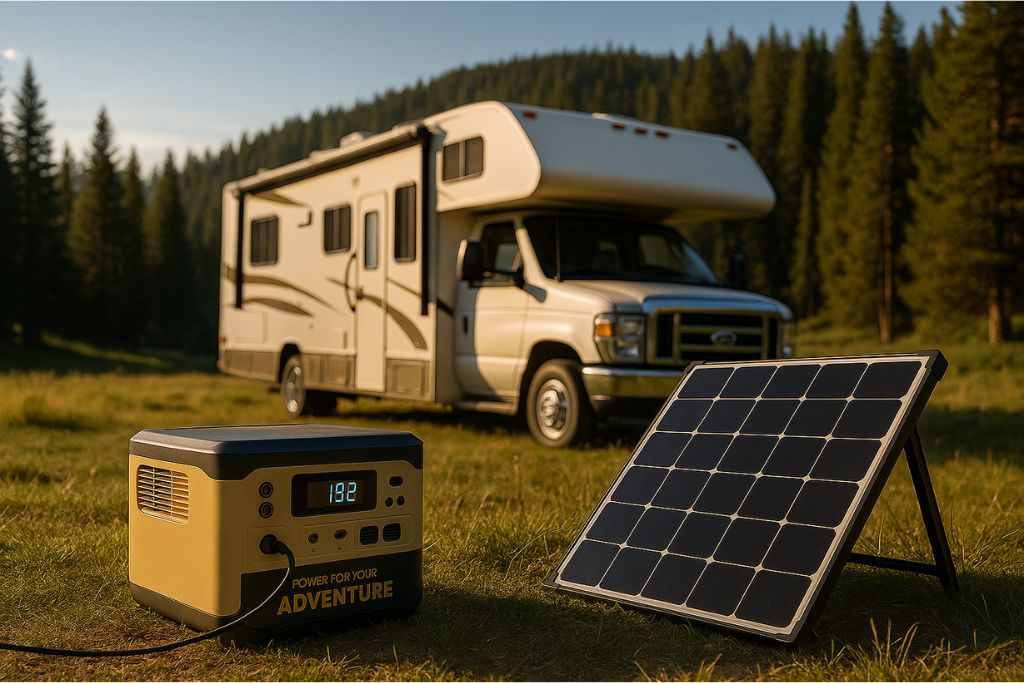RV solar power calculator for accurate energy sizing
Getting the right energy setup prevents many problems when preparing a solar system for an RV. The topic may seem technical at first, but it becomes simple when following a clear method. The idea is to understand your daily energy use and select a solar generator that matches it. Using an RV solar power calculator helps refine the estimate. The logic behind this approach connects directly with the complete gear power guide, which aligns real needs with actual solar production.
I speak from experience as someone who spends months on the road each year. Over time, I learned to measure my own consumption before every long loop, whether I was driving through Nevada or Montana. Sizing is not about picking the biggest battery. It is about finding the right balance between storage, recharge and mobility.
Knowing your daily energy needs
The first step is listing the devices used every day. A modern RV carries essential equipment. Fridge, fan, led lights, water pump, usb chargers and laptop are the most common. Each device has its own wattage and usage time. The math is simple. Power multiplied by hours equals watt-hours.
A common mistake is ignoring short but intense uses, like cooking appliances. A microwave may run only ten minutes, yet it can consume as much energy as a fridge running several hours. I always suggest measuring a normal day and then a heavy-use day, especially for travelers who work on the road.
Battery capacity: choosing the right Wh or kWh

A solar generator displays its capacity in watt-hours. The higher the number, the more energy stored. But it is only one part of the equation. What really matters is the balance between consumption and recharge. A 1000 Wh battery works well for light use but quickly reaches its limits with a full-time fridge.
The right choice depends on three simple criteria. Daily average consumption, safety margin in bad weather and charging speed. A small battery can work if you recharge often. A large battery can be wasted if the solar input is not enough to fill it.
Matching solar input and battery size
The ideal setup connects battery capacity and solar power. Many new RV owners assume that a 100 W panel can recharge any station. In reality, this only happens under perfect conditions. On the road, panel tilt, clouds and sunlight hours affect the output.
A solid starting point is between 200 and 400 W for a standard RV. This range offers enough production for most nomadic energy needs. An RV solar power calculator helps visualize real production across different U.S. regions.
For travelers who want a deeper look at solar sizing and full autonomy setups, the complete guide on solar generators for RV offers a broader view of real needs and practical configurations.
Efficient charging depending on the situation
Solar charging is not the only method. A solar generator can also charge from the vehicle alternator or from shore power. Travelers often underestimate the importance of mixing charging methods. During a long trip in Colorado, I faced several cloudy days in a row. Without alternator charging, the station would have been empty by day two.
Sizing must include these options. A small battery with frequent charging can work, just like a large battery with slow solar charging, as long as the setup stays consistent with the travel lifestyle.

Safety margins and real-world conditions
Traveling in an RV means dealing with variations. Solar panels produce less when temperatures are too high or when the sky is hazy. A comfortable autonomy relies on having a margin. I usually recommend adding 20 to 30 percent extra capacity beyond calculated needs. This keeps the system reliable even during grey days.
American regions also bring unique challenges. Desert heat reduces panel efficiency. Forested areas create shade that interrupts production. Sizing becomes a question of stability and environment awareness.
What to remember:
A reliable solar setup depends on knowing your needs and balancing battery size, solar input and charging methods. An RV solar power calculator makes the process easier and more structured. With the right estimate, the road becomes simpler and more predictable. To expand on this topic, the page RV power consumption provides a natural next step.

